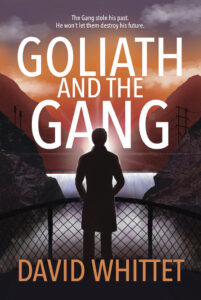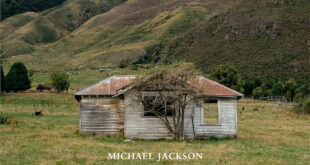If only there were more than twenty-four hours in the day! Juggling my life as a family doctor, an independent filmmaker, and an author, is a constant battle. So, what motivates me to continue the struggle? And how do I balance the demands of these three disparate careers?
They may not be so different. Medicine is a constant source of inspiration for my writing. The colourful cast of characters I have met throughout my career, colleagues and patients alike, breathe life into my writing.
Like writing, general practice is about being interested in people’s stories. Perhaps that’s why so many doctors have found second careers as authors. Somerset Maugham, Arthur Conan Doyle, Michael Crichton, Khaled Hosseini, Oliver Goldsmith, and John Keats, are just a few of the medical graduates who have made a name for themselves in the literary sphere.
Storytelling has been in my DNA since childhood. A dramatisation of Oliver Twist on television profoundly affected me as a child. In its day, Dickens’ novel brought reform to the poor law, which convinced me of the written word’s potential to change the world. I decided then I wanted to be a writer. Subsequently, A J Cronin’s novels inspired me to become a doctor, especially The Citadel, which pre-empted the National Health Service’s foundation in the UK and beyond.
Another powerful influence on my life has been the cinema. The first film I saw as an impressionable teenager was Lawrence of Arabia. After making a film each year during my time as a medical student, graduation provided me with the opportunity to pursue some cherished projects.
As the last decade of the twentieth century approached, I embarked on a production I hoped would be my magnum opus. I developed a story about two brothers, one with a severe intellectual disability. The film would be their rite of passage and show how life-changing events would shape their destiny. I had just completed the screenplay when a friend urged me to see a new film that was playing to jam-packed audiences in the cinemas.
‘You must see Rain Man,’ my friend insisted. ‘Everyone’s talking about it, and it’s just your kind of film.’
I could scarcely believe it. Rain Man mirrored my story so closely that if I continued with my film, people would assume I had plagiarised it. I put my script on the shelf and found it hard to get enthusiastic about another subject.
All this changed when I received a commission from Omega, the watchmakers, to make a film for the Agatha Christie centenary on the theme of Time and Crime. The film would be an affectionate Christiesque pastiche set in the glamourous world of art and art dealers. A renowned artist throws a party to celebrate his latest work. After unveiling his new masterpiece, the artist insults all his guests and meets a sticky end, bludgeoned to death by the pendulum of his grandfather clock.
A whodunnit was a totally new direction for me, and I enjoyed working on this project almost more than any other. The film was shown at the official Agatha Christie centenary celebrations. I was privileged to meet David Suchet, the greatest Hercule Poirot.
After Time Frame, I dusted off my script about the two brothers, The Best Place for Joe. How could I take the story in a different direction but remain faithful to the original concept? The answer was obvious in hindsight. I gave Joe a sister as well as a brother. A vital element of the story is a house fire, which kills both their parents. Joe is blamed and put in care. The film explores the complex and changing allegiances between the siblings as they deal with the fallout from the fire.
Artistic projects took a back seat during the ten years I spent on the executive board of the Royal New Zealand College of General Practitioners (RNZCGP), including a two-year stint as Deputy President. I also served on the World Organization of Family Doctors Working Party on Rural Practice during this time.
While the punishing schedules of meetings in New Zealand and overseas left little opportunity for creativity, I stored many life-changing experiences from this period in my memory bank. I later included these real-life events in my writing, particularly in The Road to Madhapur, my first work of medical fiction.
After completing my RNZCGP term of office, I wanted to make a film celebrating my time at Te Karaka, a rural township in the Gisborne region. Amiri and Aroha, a Māori take on Romeo and Juliet, proved highly successful and won many prestigious awards on the international film festival circuit.
With three published novels and three more in progress, I have returned to my first love, writing. Following the launch of Goliath and the Gang this month, the pressure is on to complete the final book in the Gang Girl trilogy and live up to readers’ expectations. Godzone and the Gorillas will bring the series to a stunning conclusion.
A new stand-alone novel is also competing for my time. Threepence on the Carpet sees Tommy, a Kiwi musician, caught up in the swinging sixties in London. He works for a South African-owned bank but writes anti-apartheid folk songs with his flower power girlfriend. There’s trouble when his two worlds collide.
My brain is bursting with more new ideas. Given the publishing industry’s obsession with book series, I’m working on a companion novel to The Road to Madhapur. The protagonists’ journey will continue in The Road to Mumbai.
My editor is keen for me to write my memoir. What should I call it? I cannot think of a more fitting title than Medicine, Movies and Manuscripts. They have been the cornerstone of my professional life. While it has often been a roller coaster ride, I wouldn’t have had it any other way.
 Goliath and the Gang by David Whittet, CopyPress, RRP $40.00
Goliath and the Gang by David Whittet, CopyPress, RRP $40.00









Join the Discussion
Type out your comment here:
You must be logged in to post a comment.